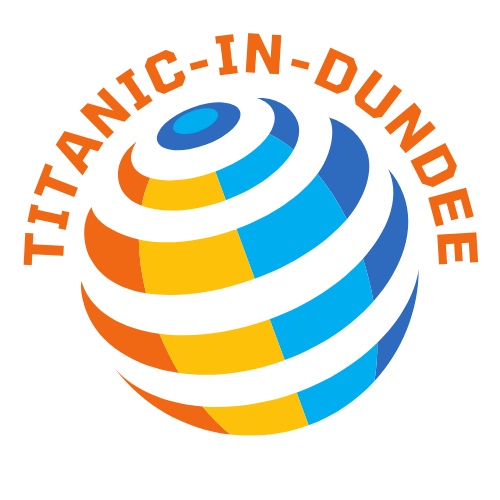In today’s fast-paced business world, every dollar counts. Procurement teams are on the front lines, battling overspending like knights in shining armor. But fear not! With the right cost-saving strategies, they can turn their budget woes into budget wins. Who knew saving money could be this exhilarating?
Table of Contents
ToggleUnderstanding Cost Saving Strategies in Procurement
Cost saving strategies in procurement focus on maximizing efficiency and reducing expenses. Organizations adopt various methods to achieve these savings. Bulk purchasing stands out as a powerful approach. By negotiating volume discounts with suppliers, businesses lower their procurement costs significantly.
Leveraging technology plays a crucial role in this process. E-procurement tools streamline purchasing workflows and enhance visibility into spending patterns. Increased transparency allows procurement teams to identify areas for potential savings quickly.
Supplier relationship management is essential for long-term cost reductions. Establishing strong partnerships with suppliers fosters collaboration and encourages innovative solutions. These relationships often lead to better pricing options and more favorable terms.
Another effective strategy involves analyzing total cost of ownership (TCO). TCO considers not just the purchase price but also maintenance, operational costs, and disposal expenses. Understanding TCO enables organizations to make informed purchasing decisions.
Value analysis is a technique that helps identify the best products or services relative to their costs. By evaluating alternatives, organizations ensure they’re not overspending while maintaining quality. This approach often results in cost-effective decisions without compromising standards.
Implementing strategic sourcing further enhances cost-saving efforts. This method emphasizes aligning procurement processes with organizational objectives while considering market conditions. It encourages continuous evaluation of supplier performance and pricing, ensuring competitive advantages remain intact.
Training and development for procurement staff can’t be overlooked. Equipping teams with negotiation skills, market analysis techniques, and spend analysis fosters a culture of cost efficiency. This continuous improvement mentality drives ongoing savings throughout the procurement cycle.
Importance of Cost Saving Strategies

Cost-saving strategies in procurement play a crucial role in optimizing organizational finances. These strategies not only manage budgets effectively but also create opportunities for businesses to thrive.
Impact on Business Bottom Line
Reducing procurement costs directly enhances profit margins. Teams that implement effective cost-saving measures see significant reductions in overall expenditures. For example, bulk purchasing allows companies to secure better rates from suppliers, resulting in immediate savings. Supplier negotiations can produce favorable contract terms, positively impacting cash flow. Organizations that prioritize cost efficiency often experience improved financial stability, positioning them better for growth opportunities.
Enhancing Competitive Advantage
Cost savings in procurement offer businesses a distinct competitive edge. Organizations that allocate budget resources wisely can invest in innovation, employee development, and technology. This investment enables them to respond quickly to market changes. Enhanced supplier relationships foster collaboration, which leads to innovative product solutions. Companies adopting strategic sourcing strengthen their market position by aligning procurement with broader business goals, cultivating agility in an evolving marketplace.
Key Cost Saving Strategies
Effective cost-saving strategies ensure procurement teams enhance organizational finances. Various methods contribute to maximizing savings and improving overall performance.
Supplier Relationship Management
Cultivating strong supplier relationships fosters collaboration and innovation. Through open communication, procurement teams can negotiate better contracts and terms. Engaging suppliers regularly allows for early identification of potential issues, leading to swift resolutions. Furthermore, collaborative efforts often result in mutual benefits, such as customized solutions or shared savings initiatives. Prioritizing these relationships builds trust and may lead to new opportunities for cost reduction.
Bulk Purchasing and Negotiation Tactics
Bulk purchasing enables organizations to negotiate significant volume discounts. Combining orders from multiple departments can amplify purchasing power. Shifting focus to select suppliers for high-volume purchases strengthens negotiations. Procurement teams gain leverage in discussions when presenting larger order quantities. Adopting this strategy not only lowers the unit price but also consolidates logistics, further enhancing savings while simplifying supply chain management.
Technology and Automation
Leveraging technology streamlines procurement processes and enhances efficiency. Using e-procurement tools provides visibility into spending patterns, enabling data-driven decisions. Automation minimizes errors and reduces manual tasks, freeing up staff to focus on strategic activities. Integrating procurement with existing systems facilitates smoother communication and reduces processing times. Adopting these technologies optimizes the procurement cycle, yielding notable cost reductions and increasing overall productivity.
Implementing Cost Saving Strategies
Cost-saving strategies play a pivotal role in enhancing procurement efficiency. These strategies require careful execution and consideration of specific processes.
Assessing Current Procurement Processes
Evaluating current procurement processes reveals opportunities for savings. Start by analyzing spending patterns to identify areas needing improvement. Assess supplier performance metrics, compliance rates, and contract terms for negotiation leverage. Conducting a SWOT analysis of the procurement function helps pinpoint strengths, weaknesses, opportunities, and threats. Implement improvements based on this data, streamlining operations to reduce unnecessary expenditures and enhance value. Maximizing technology’s role can provide better insights into procurement activities, fostering data-driven decision-making.
Training and Involving Staff
Engaging and training staff is crucial for implementing cost-saving strategies effectively. Provide procurement teams with ongoing training to enhance skills in negotiation and supplier management. Involve employees in cost-saving initiatives, encouraging them to share ideas and insights. Facilitating workshops that focus on best practices in procurement fosters collaboration and innovation. Empowering employees to understand the financial impact of their decisions creates a culture of cost consciousness. Promoting cross-departmental collaboration ensures alignment with organizational objectives, driving collective participation in achieving savings targets.
Measuring the Success of Cost Saving Strategies
Measuring the success of cost-saving strategies involves tracking specific metrics and assessing their impact on procurement efficiency. Organizations can start by analyzing cost savings achieved through bulk purchasing and supplier negotiations. Evaluating the reduction in expenses over time provides clear insight into the effectiveness of implemented strategies.
Tracking key performance indicators (KPIs) such as cost savings percentage, purchase order cycle time, and supplier performance ratings further clarifies the success of procurement initiatives. A notable cost savings percentage indicates effective negotiations and strategic sourcing. Reducing purchase order cycle time enhances efficiency and supports faster response to market demands.
Conducting regular performance reviews of suppliers plays a significant role in identifying opportunities for improvement and innovation. Supplier scorecards may include metrics like on-time delivery rates, quality of goods, and response times. Reviewing these aspects regularly informs future procurement decisions and strengthens supplier relationships.
Utilizing tools like dashboards facilitates real-time monitoring of spending patterns and strategy effectiveness. Dashboards enable procurement teams to visualize cost trends and identify potential areas for further savings. A proactive approach to data analysis fosters agility and supports continuous improvement.
Feedback from employees involved in procurement processes also aids in assessing strategy success. Engaging staff members encourages a culture of cost consciousness and enhances innovative solutions. Gathering input provides insights into practical challenges and opportunities for enhancement.
Adopting a consistent review process ensures alignment with organizational goals. Regular evaluation of procurement strategies and outcomes leads to ongoing adjustments that enhance efficiency. Exploring these aspects provides organizations the foundation for sustained cost savings in procurement.
Implementing cost-saving strategies in procurement is essential for organizations aiming to optimize their financial health. By focusing on efficient purchasing practices and fostering strong supplier relationships, businesses can significantly reduce expenses and improve profit margins.
Tracking performance metrics and encouraging employee feedback create a culture of continuous improvement. This approach not only enhances procurement efficiency but also aligns with broader organizational goals.
Ultimately, organizations that prioritize these strategies position themselves for long-term success and adaptability in an ever-changing market landscape. Embracing cost-saving measures in procurement isn’t just a financial necessity; it’s a strategic advantage that drives innovation and growth.









